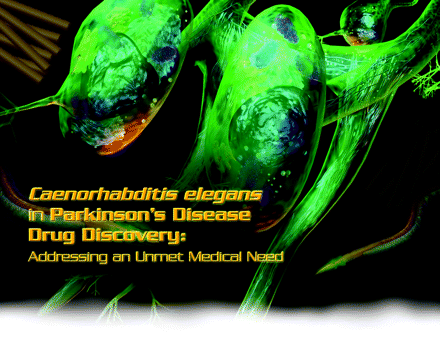Caenorhabditis elegans in Parkinson’s Disease Drug Discovery: Addressing an Unmet Medical Need
Abstract
It has been over forty years since dopamine neuron degeneration in the substantia nigra and Lewy body formation within surviving cells were described as the pathological hallmarks of Parkinson’s disease (PD). Although research in the intervening decades particularly in the last twenty-five years has yielded a variety of robust animal models and invaluable mechanistic insights into PD-associated neuronal dysfunction and cell death, therapeutic agents have not been forthcoming to alter the course of PD. Recently, the screening of experimental therapeutics for PD has been pursued through the use of genetically tractable models, such as the nematode Caenorhabditis elegans. This simple worm remarkably recapitulates the basic cellular and molecular pathways associated with PD, is amenable to facile genetic methods, and through the use of high-throughput screening technologies, provides powerful new opportunities for the in vivo identification of therapeutic targets. In this review we briefly describe the utility that the C. elegans model system may have for PD drug discovery.

- © American Society for Pharmacology and Experimental Theraputics 2008



